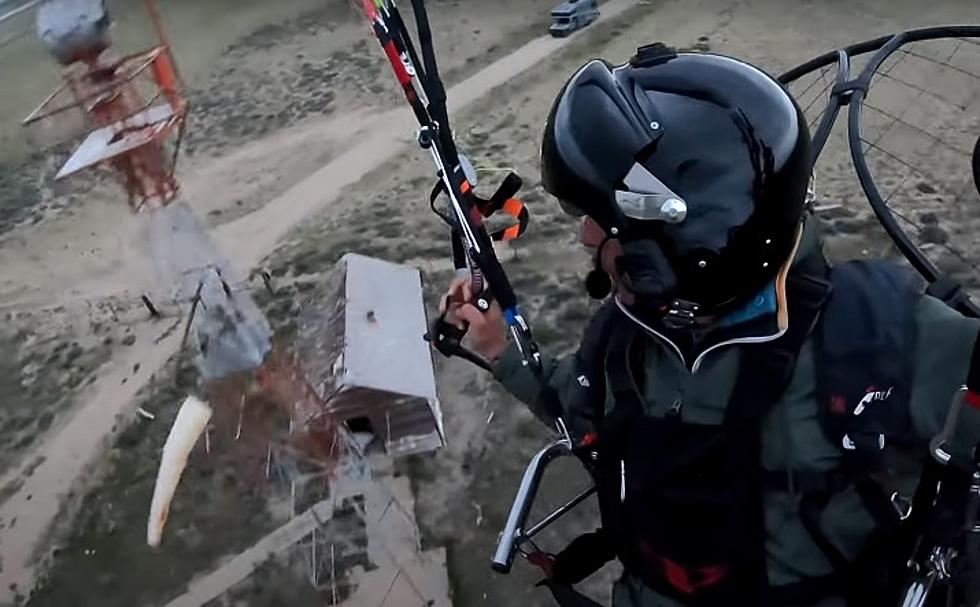
WATCH: Paraglider Flies Wyoming’s 105 Year Old Airmail Route
Below you will see a video of a man who decided to travel across America, with his paraglider, so he could retrace the routes of the original old airmail route, back when it was flown with biplanes.
He stops at one of the sides in Medicine Bow Wyoming, where an old tower, building, cement arrow, and runway still exist.
Scattered across the United States is a network of mysterious concrete arrows. They are often found in remote locations or areas difficult to access.
Some will be accompanied by a small shack, a few have a metal tower affixed to their base. Many are in good condition while others have succumbed to nature.
The shape and direction of the arrows vary, but it is clear they serve the same purpose.
You can watch his video of the Wyoming part of his trip here:
The purpose was important: helping early pilots navigate U.S. transcontinental flights at night.
In an era before radar, pilots used ground-based landmarks for guidance. This solution worked for flight during the day but grounded pilots at night.
Eventually, a system of beacons was established across the United States to guide airmail pilots around the clock.
Approximately 1,500 airmail beacons, each constructed roughly between 3 and 5 miles apart.
The beacons featured a 50-foot tower with rotating lights placed on top of concrete foundations in the shape of giant arrows measuring between 50 and 70 feet long. To increase the visibility of the concrete arrows, they were painted bright yellow.
One of these towers and one of these buildings, along with the airstrip still exist today in Medicine Bow, Wyoming.
This humble little grass airstrip helped shape America.
Medicine Bow has always been a humble little town. But at one point it was an important stop on America's first coast-to-coast railway, its first coast-to-coast highway, and the nation's first airmail service.
The town was even made famous in the best-selling novel The Virginian.
As if the Pony Express wasn't daring enough, next came the brave and slightly foolhardy men who took the mail to the sky.
Using old and not-so-reliable World War I surplus planes, the United States Postal Service was determined to figure out how to fly mail from coast to coast saving up to a month of travel time if they were successful.
At the little Medicine Bow airport there is a cement arrow, pointing the flyers to their next stop. These arrows were placed across the nation for the pilots to see and follow from the air.
The only way to navigate was to fly low and follow the Union Pacific railroad tracks across the country.
Cheyenne, Medicine Bow, Rock Springs, and other towns along the route were refueling and repair points on the map.
Many planes crashed. Some men died.
The book "Wyoming Air Mail Pioneers" chronicles the men who were legends, heroes, and celebrities of their time.
"Wyoming Air Mail Pioneers" was co-written by Starley Talbott and Michael E. Kassel with a foreword by local Cheyenne flight school owner Doniv Feltner of Wings Of Wyoming.
Ask for it at your local Wyoming bookstore or order it online.
Wyoming's Best Pilots Astound At The Glendo Fly-In 2021
Gallery Credit: Glenn Woods
Local Pilots Give Wyoming Kids A Free Flight
Gallery Credit: Glenn Woods
More From K2 Radio









